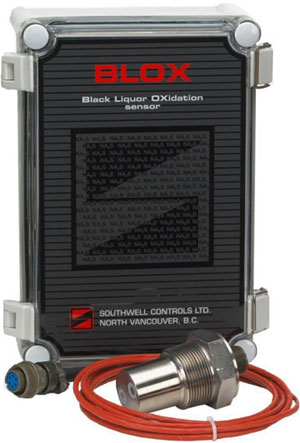 |
Southwell Controls Ltd. is a division of SouthwellCorp Call Toll Free: 1-877-984-7788
Blox (Black Liquor Oxidation Sensor)
|
|
Reduced Sulphur EmissionsThe BLOX sensor, developed by the Pulp & Paper Institute of Canada, measures the extent of oxidation of black liquor. The sensor provides an analog output, proportional to the concentration of sodium sulphide. Typically installed after the black liquor oxidizer, the output signal may be used to control the oxidation process ensuring optimum combustion of liquor in the recovery boiler. The Black Liquor Oxidation Sensor aids in black liquor analysis to understand gasification and composition of black liquor oxidation in pulp and paper boiler applications. Proper analysis will result in accurate measuring of TRS emissions.
Increased Boiler EfficiencyImproved control of the oxidation process reduces periods of over or under-oxidation. Over-oxidized black liquor can become viscous and cause process upsets due to the formation of inorganic deposits and fouling of valves, fittings and process lines. A loss of calorific value may also occur. Under-oxidized black liquor can result in an increase in TRS emissions.
Design Specifications, Model BLX-SP2
|
Patented Technology - Black Liquor Oxidation Sensor
Southwell Controls is exclusively licensed by FP INNOVATIONS
to manufacture and market the patented BLOX - Black Liquor Oxidation Sensor.
![]()
![]()
